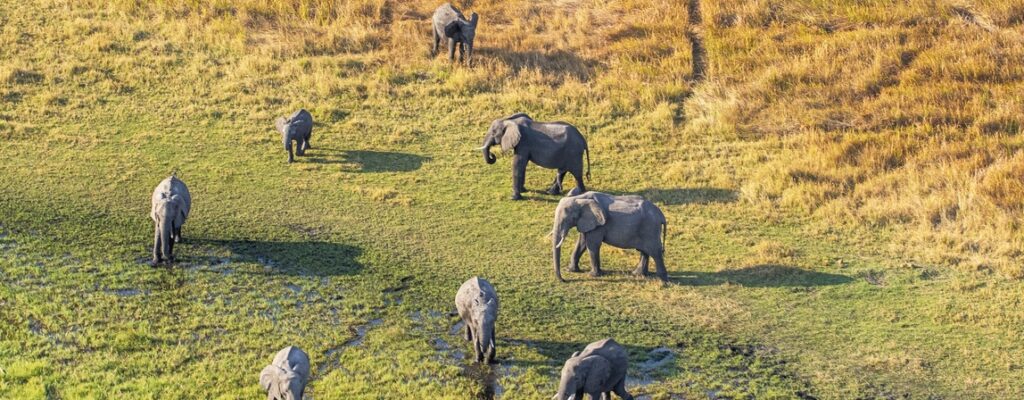Perspectives Posted on 2023-12-12 11:45:01
WOAH actions
Responding to aquatic animal health emergencies
Keywords
Authors
M. Stone, SPADE Solutions Ltd, New Zealand.
The designations and denominations employed and the presentation of the material in this article do not imply the expression of any opinion whatsoever on the part of WOAH concerning the legal status of any country, territory, city or area or of its authorities, or concerning the delimitation of its frontiers and boundaries.
The views expressed in this article are solely the responsibility of the author(s). The mention of specific companies or products of manufacturers, whether or not these have been patented, does not imply that these have been endorsed or recommended by WOAH in preference to others of a similar nature that are not mentioned.
Objective 3 of the WOAH Aquatic Animal Health Strategy 2021–2025
Exotic and emerging disease outbreaks in modern aquaculture
Disease is a major threat to aquatic animal production, as the risk factors for outbreaks and disease emergence increase. The WOAH Global Conference on Aquatic Animal Health in 2019 explored both the reasons and options for responding to this situation, as well as its impacts. The WOAH Aquatic Animal Health Strategy provides the framework for the global and national response [1]. The rapid growth of diverse species production systems and reliance on trade in brood stock, feed and aquatic animal products presents significant opportunities for disease emergence and spread. The drive for increased production has exposed vulnerabilities in biosecurity systems [2]. Since 2000, an average of two new diseases have been listed in the WOAH Aquatic Animal Health Code every three years, invariably because of significant impacts on aquaculture production through animal mortality during disease outbreaks.
The hazard landscape for the aquatic sector
However, the threats are not confined to disease emergencies. Dependence on riverine, estuarine and coastal environments creates vulnerability to natural disasters, many directly or indirectly linked to climate change, including droughts, floods, cyclones, ocean acidification, hypoxia and sea-level rise. Human-mediated risks to aquaculture production arise from unsustainable production practices, poor management practices, and pollution, all of which create food safety risks [2].
If this sector is to be ready and efficient in an emergency, it requires an all-hazards approach, which starts with hazard analysis specific to the locations and production systems involved, to identify, characterise and prioritise natural and human-mediated threats and the impacts they can potentially cause. Engaging multi-disciplinary teams during this process will ensure the broadest consideration of potential impacts, often bringing issues to light that may otherwise be overlooked [3]. Tools and templates are available to guide hazard analysis, but simple frameworks can also be very effective in supporting the engagement of multiple parties and structuring their input.
Emergency management disciplines
The drive towards multidisciplinary and systems thinking has seen emergency management experts in different sectors increasing their cooperation during readiness and response activities. Incident management systems create a command-and-control framework that enables collaboration between different parts of the response, and between the various agencies involved. Such frameworks are often at the centre of national emergency management systems. They are typically led by central government and bring whole-of-government (i.e. all government agencies, from technical to financial to support and enabling) and whole-of-society (i.e. public, private and civil society) capability together in a unified and cohesive operating structure. Disciplines within such systems extend from mechanisms for situational awareness (e.g. situation reports), across data management and processing approaches (e.g. incident management software), through to public information management that follows risk and crisis communication principles. These systems require learning approaches that build capability among the people involved, creating role-based documentation that is then brought to life during simulation exercises, which might involve scenario modelling and games. After-action reviews ensure that the experiences gained during emergencies drive continuous learning and improvement.
Contingency planning and emergency management capacity development
Preparedness for disease outbreak response remains limited in WOAH Members, as evidenced by results to the two relevant critical competencies in PVS Pathway evaluations [3]. Good examples of contingency planning and public–private partnerships in aquatic sector readiness and response do exist, with published evidence from Australia in particular, and demonstrate the potential to improve outcomes to disease response [4]. WOAH Collaborating Centres have established the WOAH Collaborating Centre Network on Veterinary Emergencies (EmVetNet) to provide technical support for readiness and response for Members [5]. This is part of an expanding WOAH Emergency and Resilience Programme, in cooperation with operational partners from the Quadripartite (1) and Interpol, and resource partners from the WOAH World Animal Health and Welfare Fund.
WOAH 89th General Session Technical Item and the WOAH Aquatic Animal Health Strategy
Recognising the growing importance of engagement in national, regional and global emergency readiness and response systems, in today’s context of emerging disease, pandemics, and increasing risks of natural and human-mediated disasters, WOAH devoted the Technical Item of its 89th General Session to this important topic [3]. The Technical Item explored the diverse hazard landscape (Figure 1), emergency management disciplines, the stage of implementation among WOAH Members, and current initiatives and future directions for WOAH’s work programme in these areas. These are topics that Veterinary Services and Aquatic Animal Health Services should devote themselves to, upskilling staff, forming interagency and cross-sectoral relationships with emergency services within national systems, and seeking regional collaborations that deliver efficiency in resource use and innovation in planning for adaptation and mitigation. The incorporation of Objective 3 on Resilience to Emergencies within the WOAH Aquatic Animal Health Strategy provides the mechanism for targeted planning of interventions supporting development in the capability and capacity of national Aquatic Animal Health Services, and in their response to emergencies affecting aquatic animal health and production. Many of the skills and disciplines in emergency management are generic, and all users will benefit from the intended WOAH Training Platform module on Emergency Management. It aims to help users understand the specific context, threats, vulnerabilities, and risk mitigation opportunities in the aquatic animal sector, thus supporting additional targeting of WOAH programmes. WOAH continues to seek resource and implementation partners to achieve this focus.

(1) The Quadripartite is composed of the Food and Agriculture Organization of the United Nations (FAO), the World Organisation for Animal Health (WOAH), the United Nations Environment Programme (UNEP) and the World Health Organization (WHO).
https://doi.org/10.20506/bull.2023.2.3409
References
- World Organisation for Animal Health (WOAH) (2021). – OIE Aquatic Animal Health Strategy 2021–2025,”. https://www.woah.org/en/document/oie-aquatic-animal-health-strategy-2021-2025/ .
- S. R.p, D.-D. J, M. C.v, and P. M.j, “Vulnerabilities in aquatic animal production,” vol. 38, no. 2, p. 423, Sep. 2019, doi: 10.20506/rst.38.2.2996.
- M. Stone, D. Donachie, C. Wannous, and K. Hamilton, “World organisation for animal health, Veterinary services and aquatic animal health services engagement in global, Regional and national emergency management systems (WOAH) (2022) sg8-en.pdf (woah.org) p. 45.
- S. K and E. I, “Sharing responsibility between public and private sectors for the management of aquatic emergency animal diseases,” vol. 38, no. 2, p. 533, Sep. 2019, doi: https://doi.org/10.20506/rst.38.2.3004.
- “Collaborating Centre Network for Veterinary Emergencies,” WOAH – World Organisation for Animal Health. https://www.woah.org/en/what-we-offer/emergency-and-resilience/collaborating-centre-network-for-veterinary-emergencies/ .












